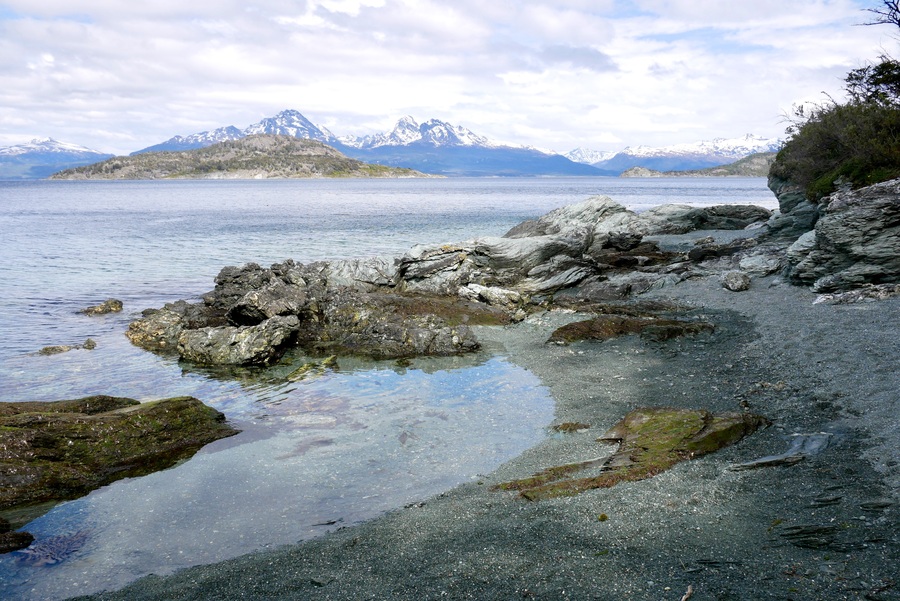
Tierra del Fuego National Park in Argentina
Tierra del Fuego is a windswept archipelago in Argentine Patagonia, located at the southernmost tip of the Americas.
Here, nature is bold, untamed, and irresistibly alluring. For many, it marks the end of the road…literally. The Pan-American Highway begins at Alaska’s northernmost point and concludes within the borders of Tierra del Fuego National Park.
For others, like myself, it represents a beginning. It is a launching pad for some of the world’s most intrepid adventures. A gateway to the world’s last untouched paradise.
Beyond Ushuaia and the Beagle Channel lies the infamous Drake Passage.
And beyond that—the White Continent.
Tierra del Fuego National Park, Patagonia
Tierra del Fuego National Park, located at the southernmost tip of Argentina near Ushuaia, is a breathtaking expanse of rugged mountains, dense forests, and pristine waterways. Covering roughly 630 square kilometers, it is the only Argentine national park that combines marine, forest, and mountain ecosystems. It boasts a diverse range of flora and fauna and a unique blend of sub-Antarctic wilderness, glacial lakes, and dramatic landscapes.
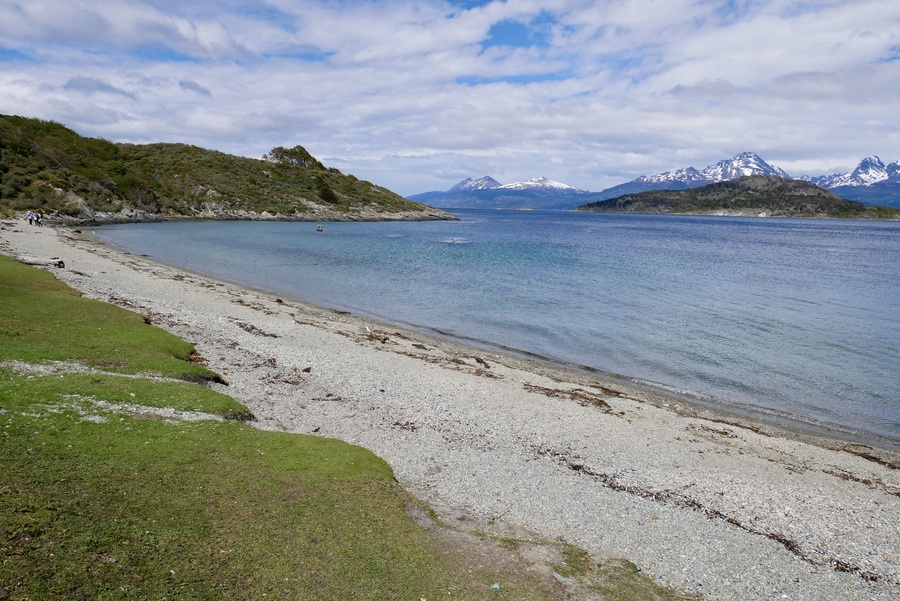
The name Tierra del Fuego translates to “Land of Fire” in Spanish. Portuguese explorer, Ferdinand Magellan, coined the name in 1520. As he navigated the waters around the southern tip of South America, he observed fires burning around the peninsula. These fires, ignited by the area’s indigenous inhabitants, were used for warmth and signaling during the region’s harsh winters.
Tierra del Fuego National Park Attractions
Tierra del Fuego National Park offers a variety of outdoor activities for nature lovers and adventure seekers. While it isn’t as famous as Patagonia’s Torres del Paine (home to the famous W Trek) or Los Glaciares (home to Mt Fitz Roy and the Perito Moreno Glacier), it still has a plethora of things to see and do.
Visitors can hike scenic coastal trails, canoe along the Lapataia and Roca lakes, and send off postcards from the “End of the World.”
End of the World Post Office
The southernmost post office in the world (excluding Antarctica) sits on the edge of Ensenada Bay in Tierra del Fuego.
To go along with all the other “end of the world” experiences in and around Ushuaia, the small post office allows you to send mail to your loved ones with a special “Fin del Mundo” postmark.
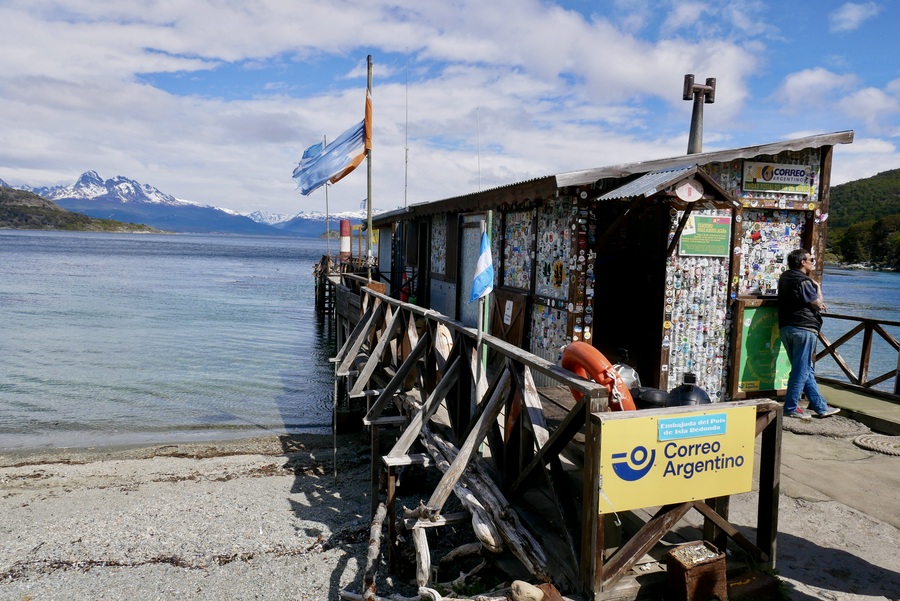
When we traveled to Patagonia en-route to South Georgia, we sent a postcard to my parents, who were babysitting Elio. It arrived a month or so later.
The post office also stamps passports with a full page “fin del mundo” stamp. The stamp features penguins and a photo of the park’s postmaster.
Coastal Trail
Tierra del Fuego’s coastal trail follows the Beagle Channel for eight kilometers, connecting Ensenada bay and Lapataia Bay. According to our tour guide, hiking the coastal trail is the best thing to do in Tierra del Fuego National Park.
The trail traverses lush lenga and guindo forests, boasting several panoramic viewpoints along the way.
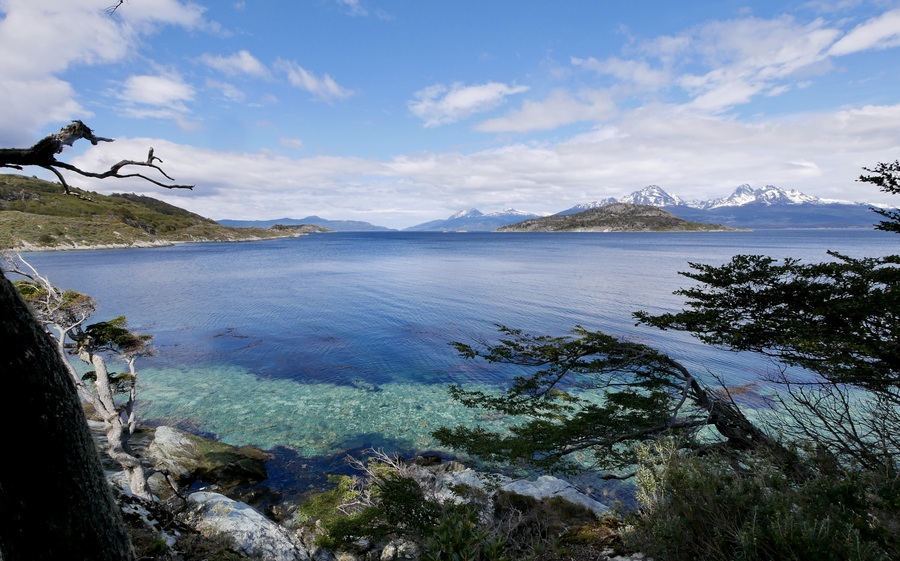
The trail takes three to four hours to complete. Since we only had half a day in the park, I only had time to walk the first 15 minutes of the trail before turning back.
But from what I saw, I could certainly understand why our guide wholeheartedly recommended the walk.
The Beagle Channel’s cobalt waters and surrounding snowcapped mountains are stunning.
Alakush Visitor Center
The main hub for visitors exploring Tierra del Fuego National Park, Alakush Visitor Center offers introductory exhibits on the area’s flora, fauna, geology, and history.
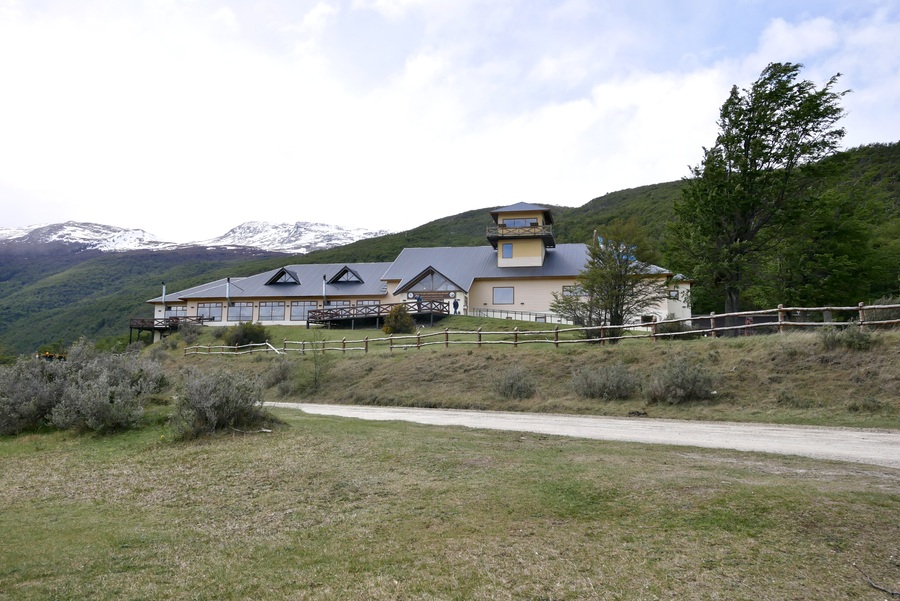
Located near Río Lapataia and surrounded by mountain peaks, the center also has a restaurant and café—popular spots for refueling before or after a hike.
Río Lapataia
Río Lapataia flows through the heart of Tierra del Fuego National Park, connecting Roca Lake and Lapataia Bay.
Framed by towering mountain ranges, the river is a crucial part of the park’s rich ecosystem. It is home to otters, beavers (an invasive species in the area) and an array of waterfowl. Along its banks, hikers can find scenic viewpoints and footbridges.
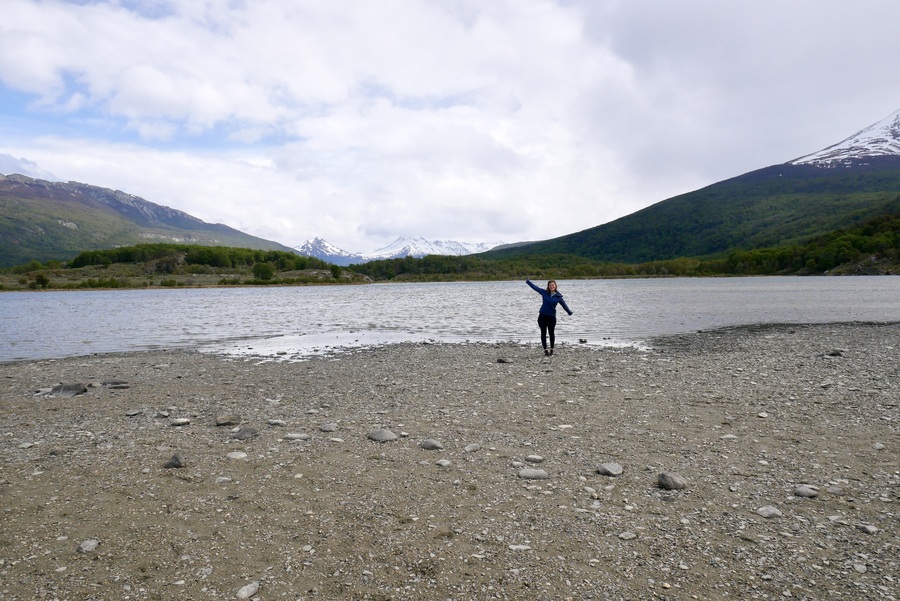
The river also holds cultural significance, as the indigenous Yámana people once navigated its waters in canoes.
Lago Roca
After a brief stop at the visitor center, we continued on to Lago Roca.
The glacial lake straddles the border of Chile and Argentina. The Guanaco and Pirámides mountain ranges surround its icy waters.
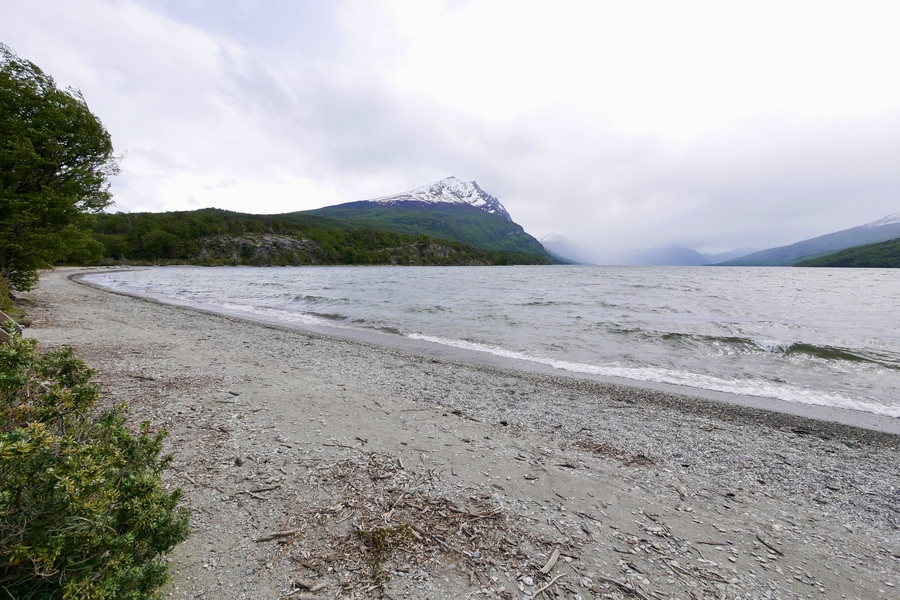
Depending on whom you ask, you may hear it referred to as Lago Acigami (its Yagán name) or Lago Errázuriz (its Chilean name).
Lapataia Bay
Lapataia Bay, one of Tierra del Fuego National Park’s top attractions, is a breathtaking coastal inlet where the Andes meet the sea.
Scenic trails and wooden walkways meander through the area’s grasses and forests showcase the area’s pristine and untouched beauty. Rugged mountains surround the wildlife-rich bay.
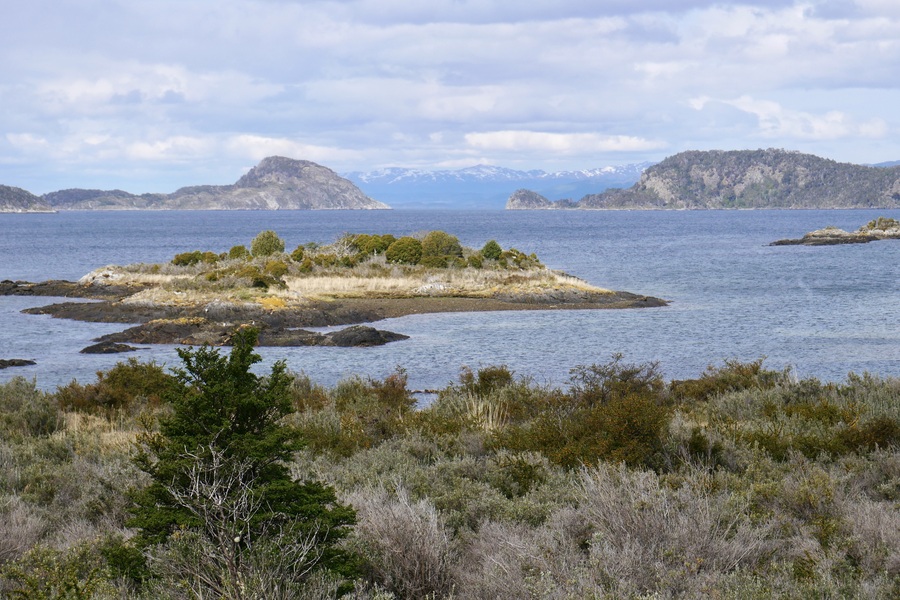
Lapataia Bay marks the end of Route 3—the final stretch of the Pan-American Highway, which spans 30,000 miles and 14 countries from Prudhoe Bay, Alaska, to Tierra del Fuego National Park.
Near the parking area, you’ll find an oft-photographed sign marking the end of National Route 3.
Wildlife in Tierra del Fuego National Park
Native species in Tierra del Fuego include the guanaco, Andean fox, and Magellanic woodpecker. The park is also home to about 90 bird species, including black necked swans, kelp gulls, Austral thrush, Upland geese, and Andean condors.

In 1946, in an attempt to bring the fur trade to the southern tip of South America, a Canadian brought 20 beavers to the area. Over time, the population of beavers ballooned to around 200,000 due to a lack of natural predators. These North American beavers have drastically altered local ecosystems by felling trees and creating dams that flood native forests.
Massive eradication programs have attempted to quell their population, though the issue persists today.
Ushuaia Argentina: Capital of the Region
Ushuaia, the southernmost city in Argentina, lies over 3,000km from Buenos Aires on a remote, windswept island across the Strait of Magellan from mainland South America. (Though often called the “End of the World,” the actual southernmost city is Puerto Williams on Navarino Island, Chile.)
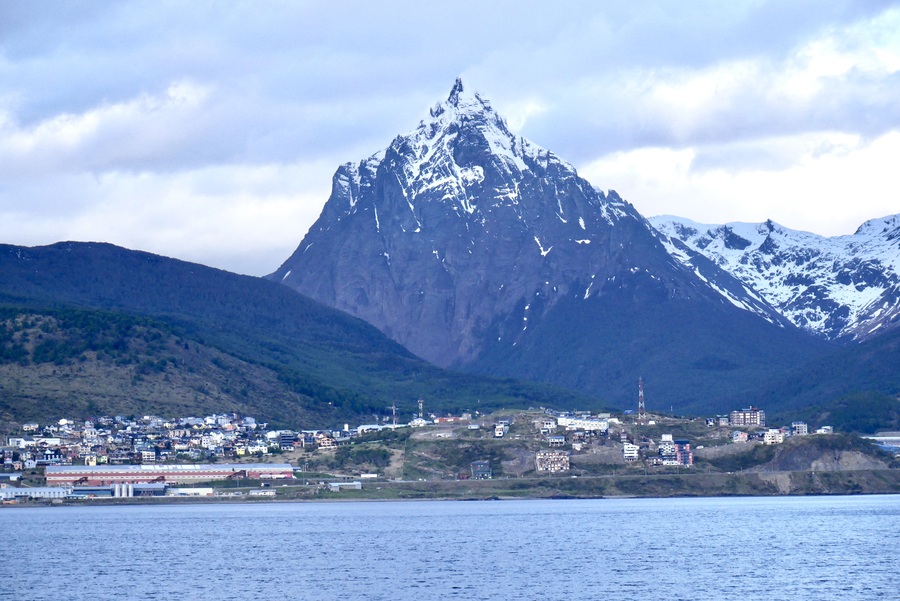
Throughout the 20th century, Ushuaia evolved from a remote outpost to an adventure tourism hub.
Ushuaia became an official settlement in 1884, when the Argentine government established a penal colony in Ushuaia. The town’s prison housed dangerous criminals who were forced to work on infrastructure projects.
In the 1970s and 1980s, the Argentine government encouraged migration to the region by offering tax incentives. The town’s population ballooned, as people from around Argentina flocked to the region for economic opportunity. The town now has upwards of 80,000 inhabitants.
Today, far-flung Ushuaia has become a top place to visit in Argentina and a magnet for adventure-seekers. It is the premier gateways for voyages to the land of ice and penguins.
Where to Stay Nearby
Though you won’t find any hotels within the national park’s boundaries, there are three main designated camping spots for the adventure-inclined: Laguna Verde, Río Pipo, and Ensenada Zaratiegui. Each site has basic facilities. Wild camping is prohibited to protect the park’s fragile ecosystem.
Most visitors choose to stay in nearby Ushuaia. The city has an array of lodging options that range from basic to luxurious.
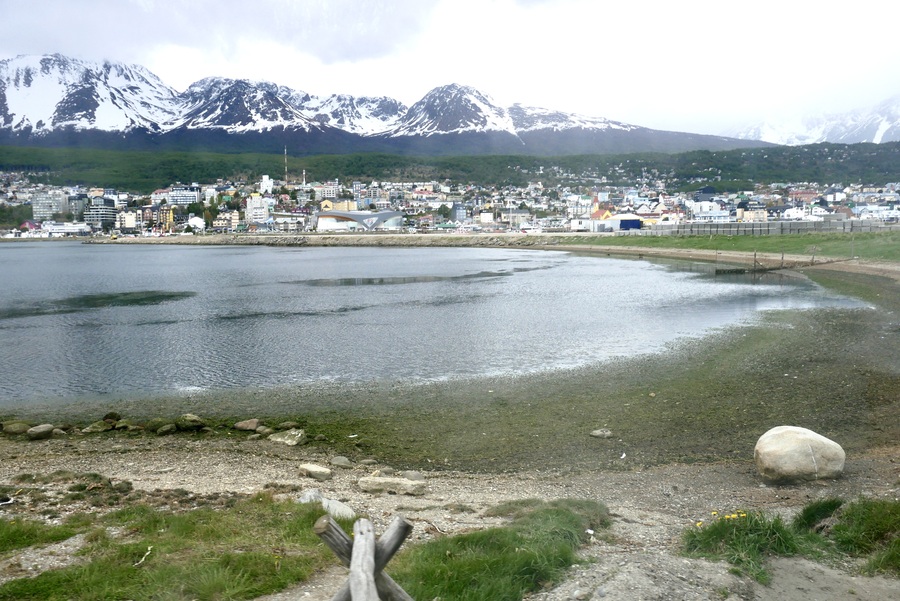
Among budget options, the Posada Del Fin Del Mundo stands out for its affordable prices and cozy ambiance.
Hotel Albatros has stylish rooms and a central location near the cruise port. It is an excellent midrange option.
For a step up in luxury, the Arakur Ushuaia Resort and Spa has impeccable rooms, panoramic views of the beagle channel, spa amenities, and multiple pools and hot tubs.
Tierra del Fuego Tours
Tierra del Fuego is easy to explore independently.
But if you have limited time in the area, joining a tour can be an efficient and convenient way to visit the park. There are a number of half day tour options that are perfect for travelers who have a few hours to explore.
With a full day, you can join an eight hour trekking and canoeing tour of Lapataia Bay.
We visited Tierra del Fuego National Park prior to embarking on our Antarctica cruise with Atlas Ocean Voyages. The tour was a complementary pre-cruise excursion that brought us to the park’s highlights. It included a knowledgeable guide who loaded us with information about Tierra del Fuego’s history and biodiversity. The tour was a wonderful first leg to an extraordinary trip.
Getting to the National Park
At only 13 kilometers outside of Ushuaia city limits, Tierra del Fuego is very easy to access. The park is only a short 20 minute drive or taxi ride away.
Alternatively, buses travel between downtown Ushuaia and the national park nearly every hour.
For a more unique option, you can opt to take the Southern Fugian Railway, better known as the End of the World Train.The 50-minute journey into the park traces the final seven kilometers of an old freight line that once served Ushuaia’s prison. It is the world’s southernmost functioning rail line.
When to Visit Tierra del Fuego
Peak season in Ushuaia and Tierra del Fuego National Park runs from December through February. During the Argentine summers, temperatures remain relatively mild (40–60°F) and long daylight hours leave plenty of time for exploring.
We visited the area in November and encountered mild weather.
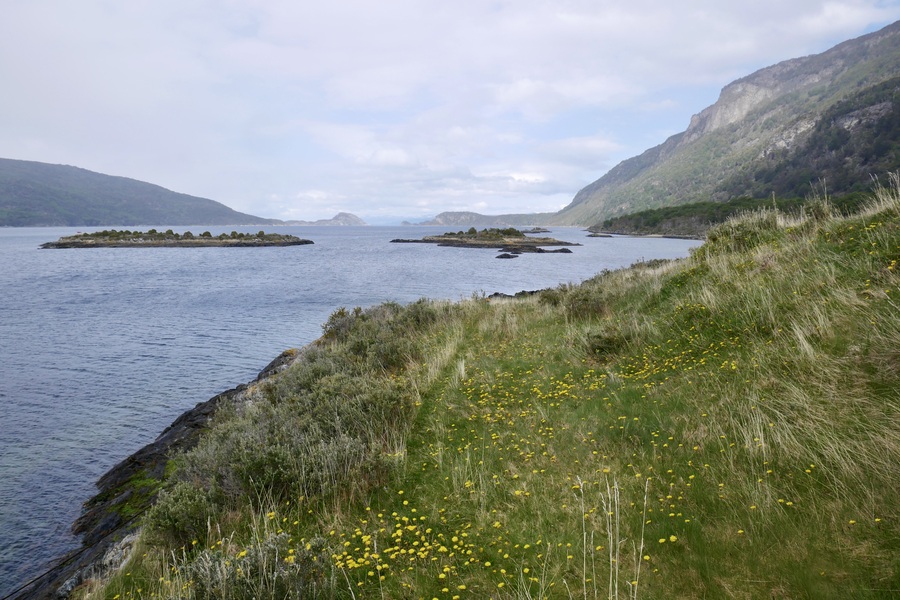
Winter in Ushuaia (June-August) is cold and dark, with limited daylight hours.
However, if you’re into winter sports, you’ll find opportunities for skiing and snowboarding at Cerro Castor.
***
Argentina’s Tierra del Fuego is rugged, wild, and remote. It is a place with rich history, varied topography, and diverse wildlife.
As one of the most beautiful places to visit in Patagonia, it merits more than just a cursory pre-cruise glance.
And not just because of its proximity to the Great White Continent beyond.


